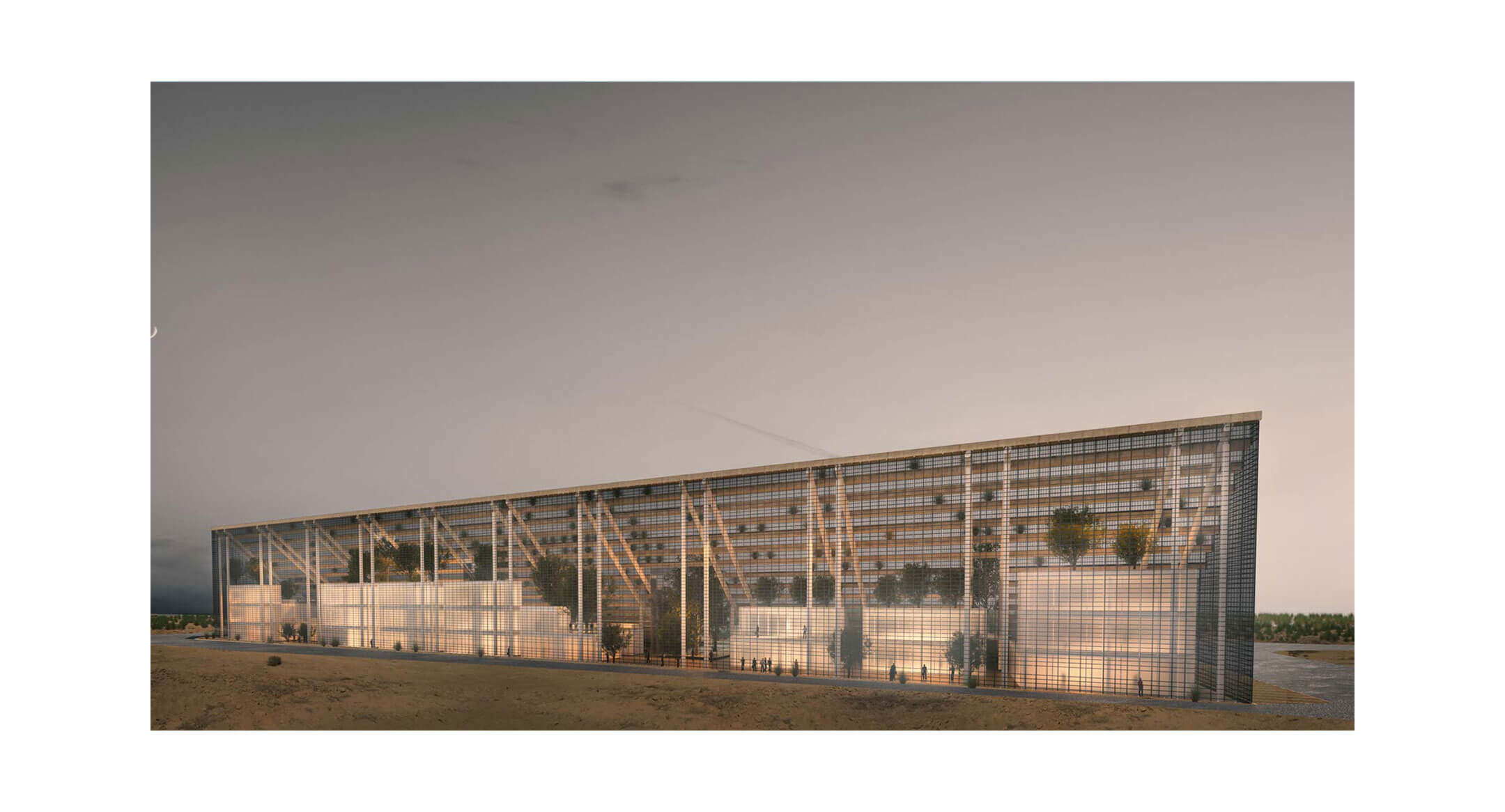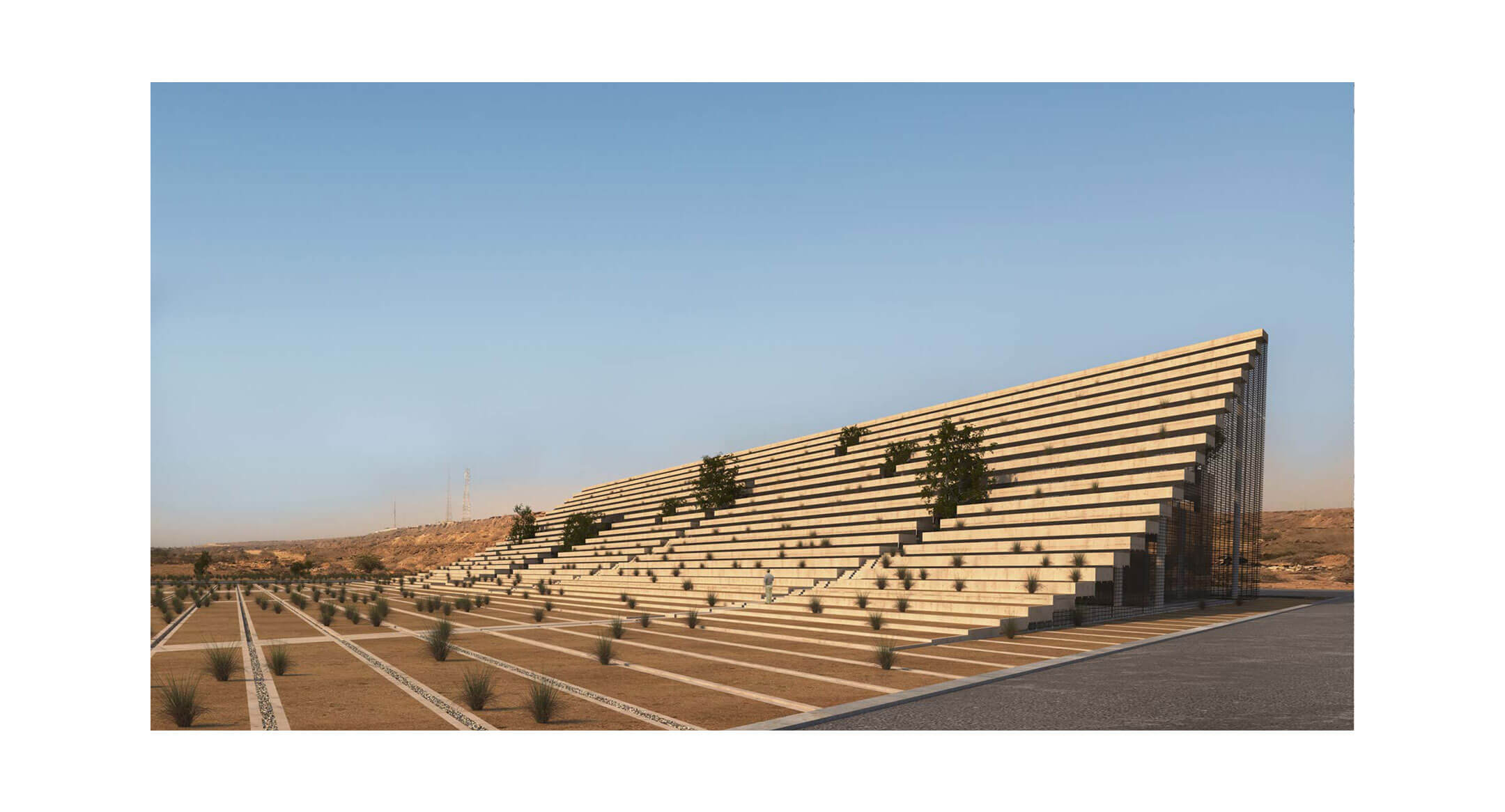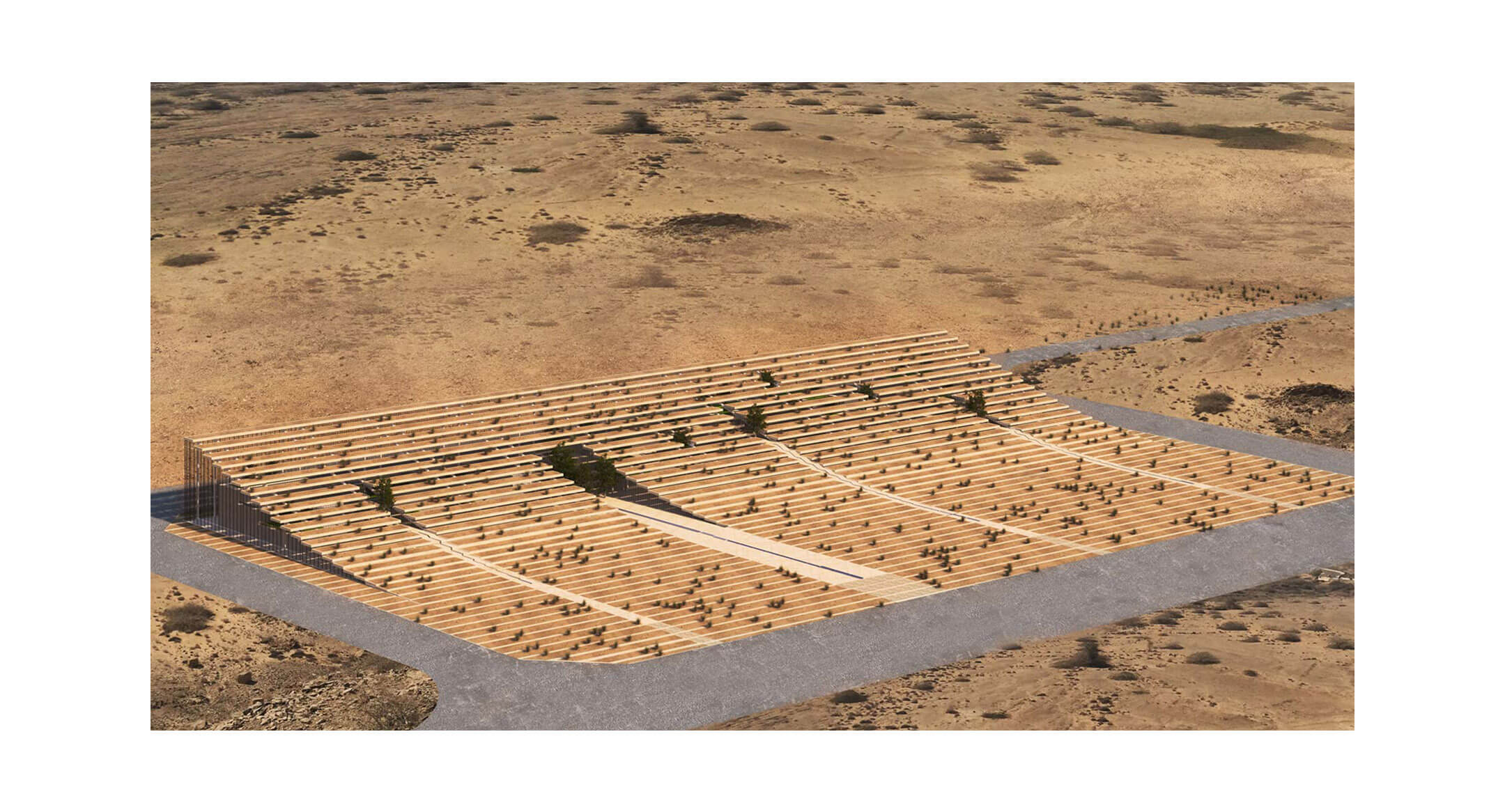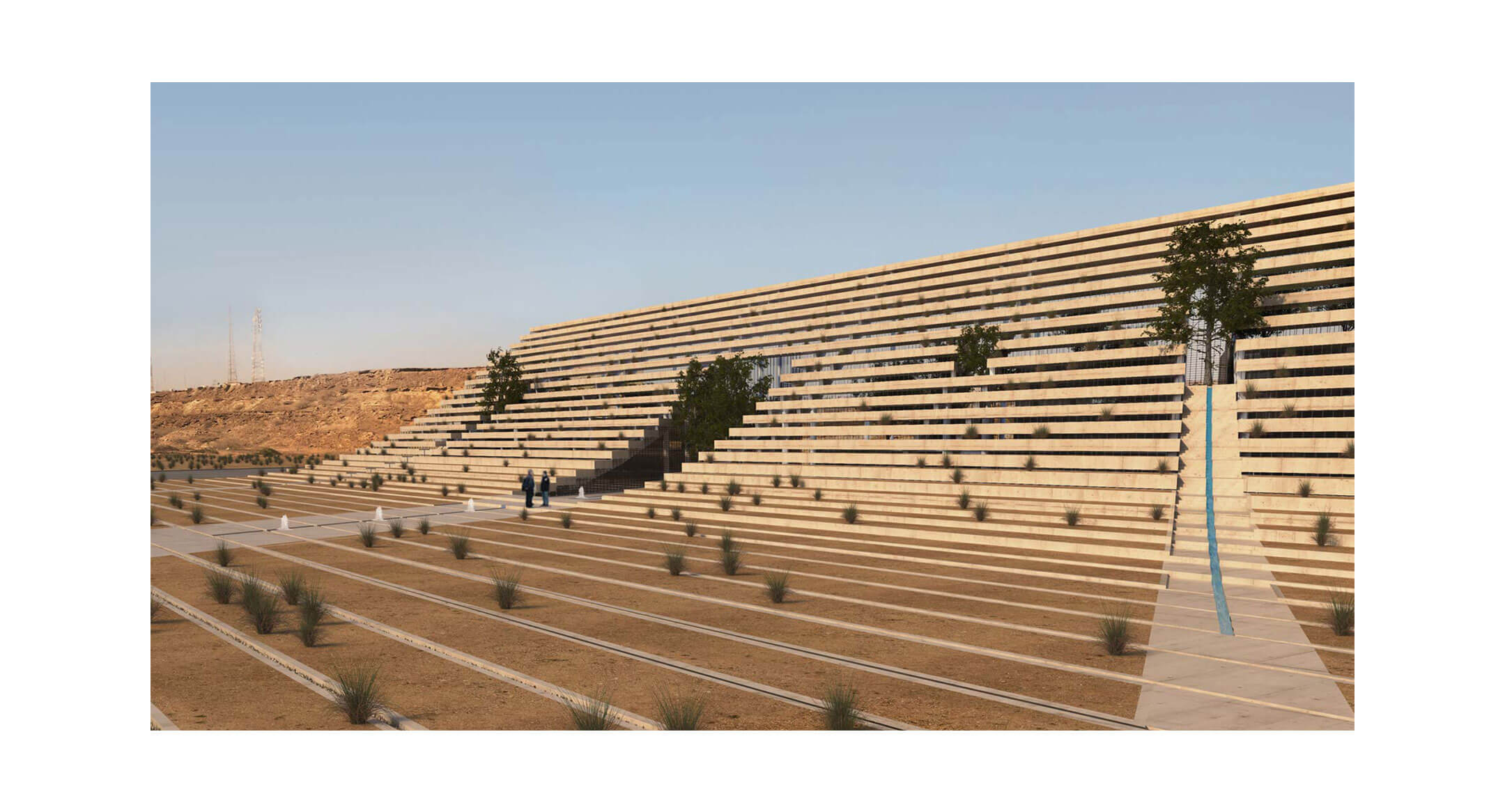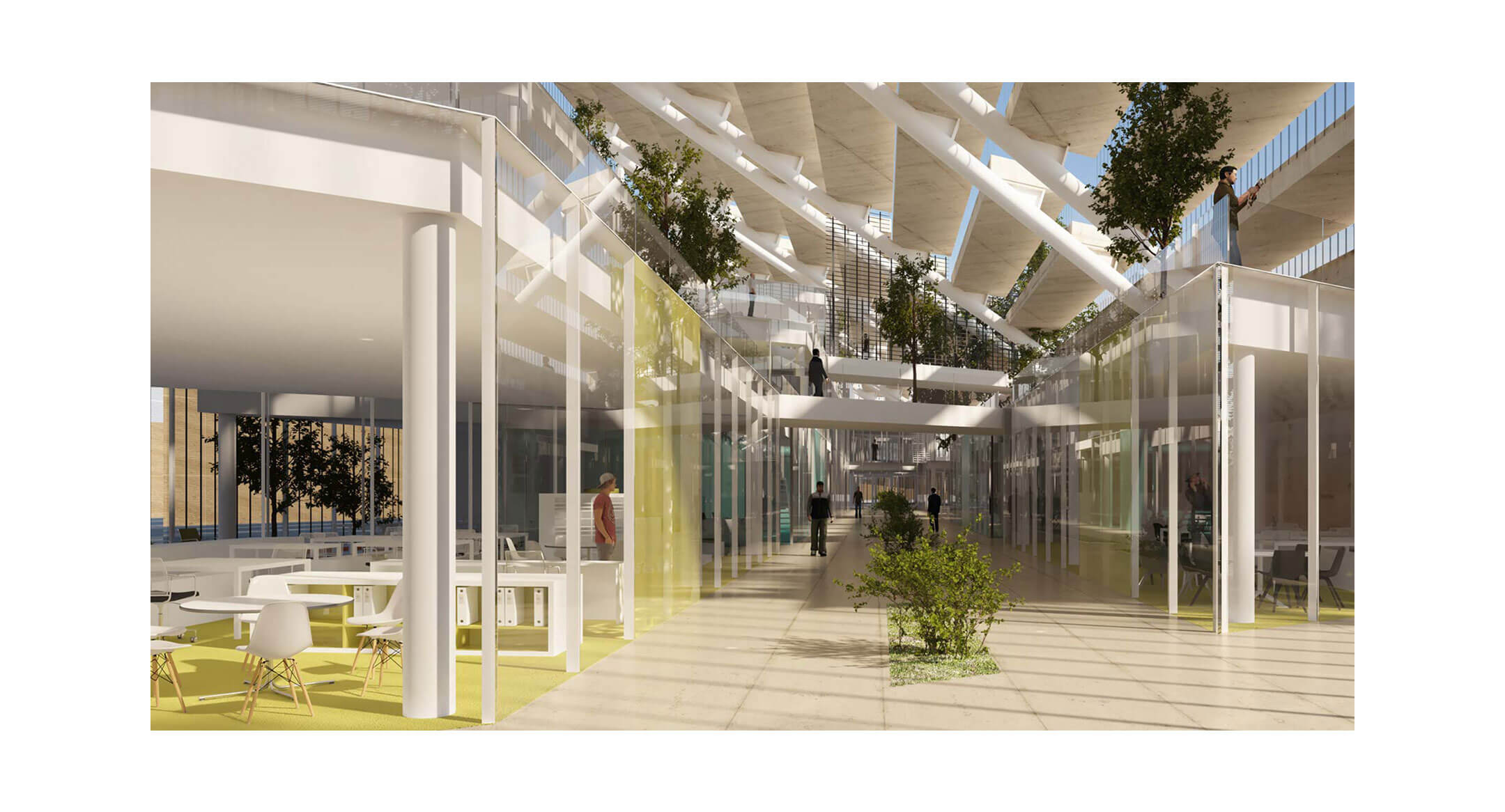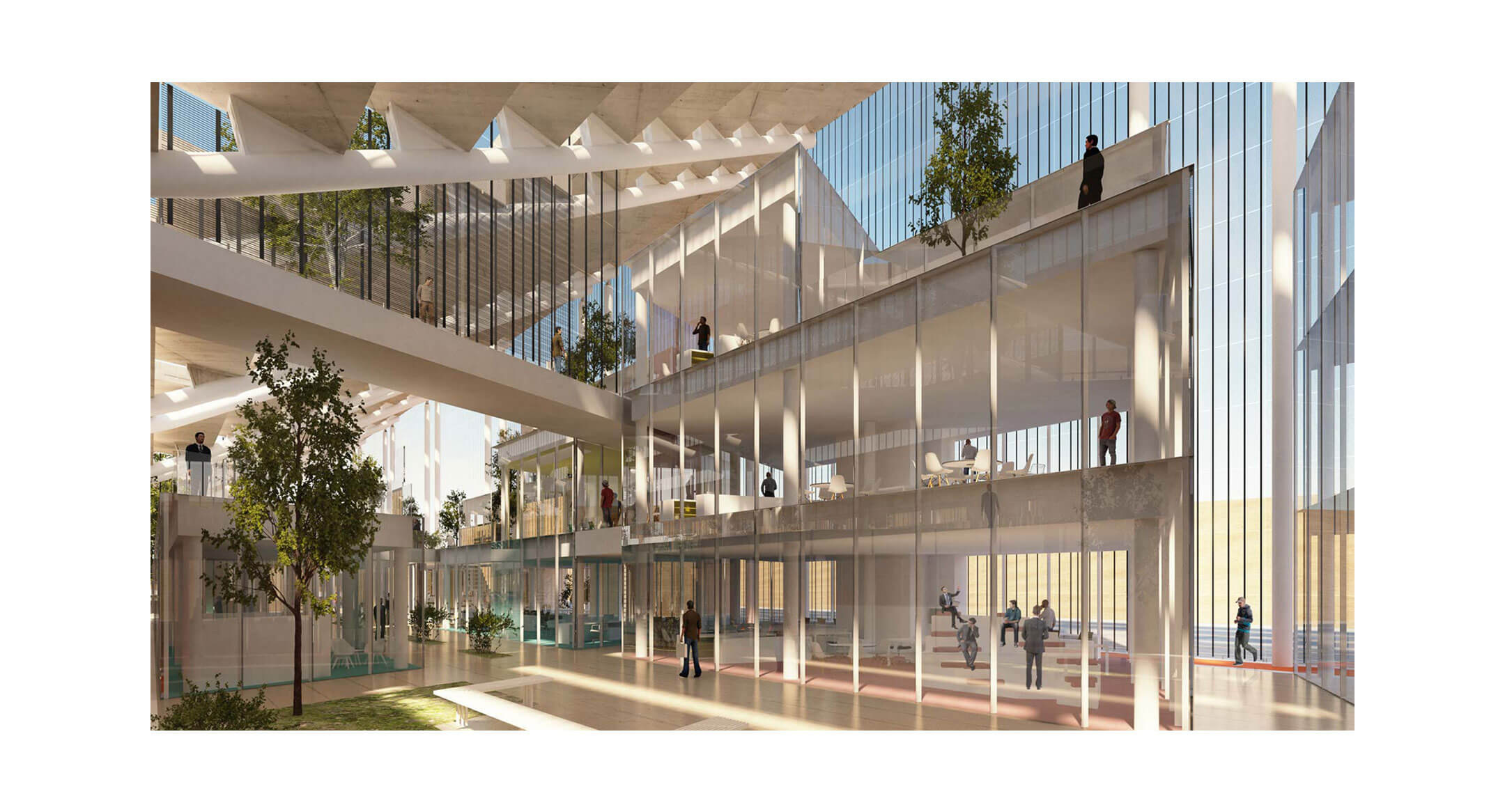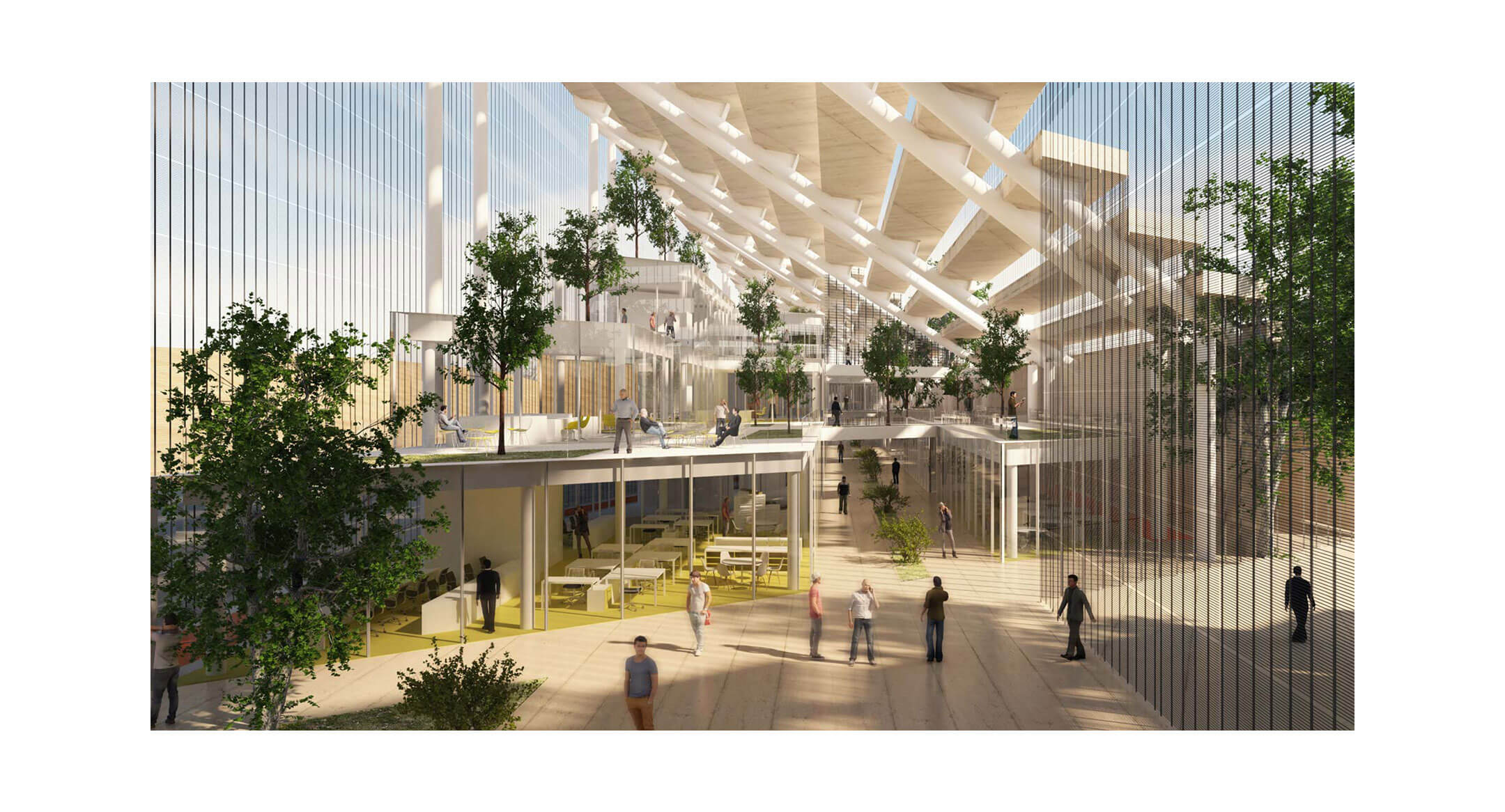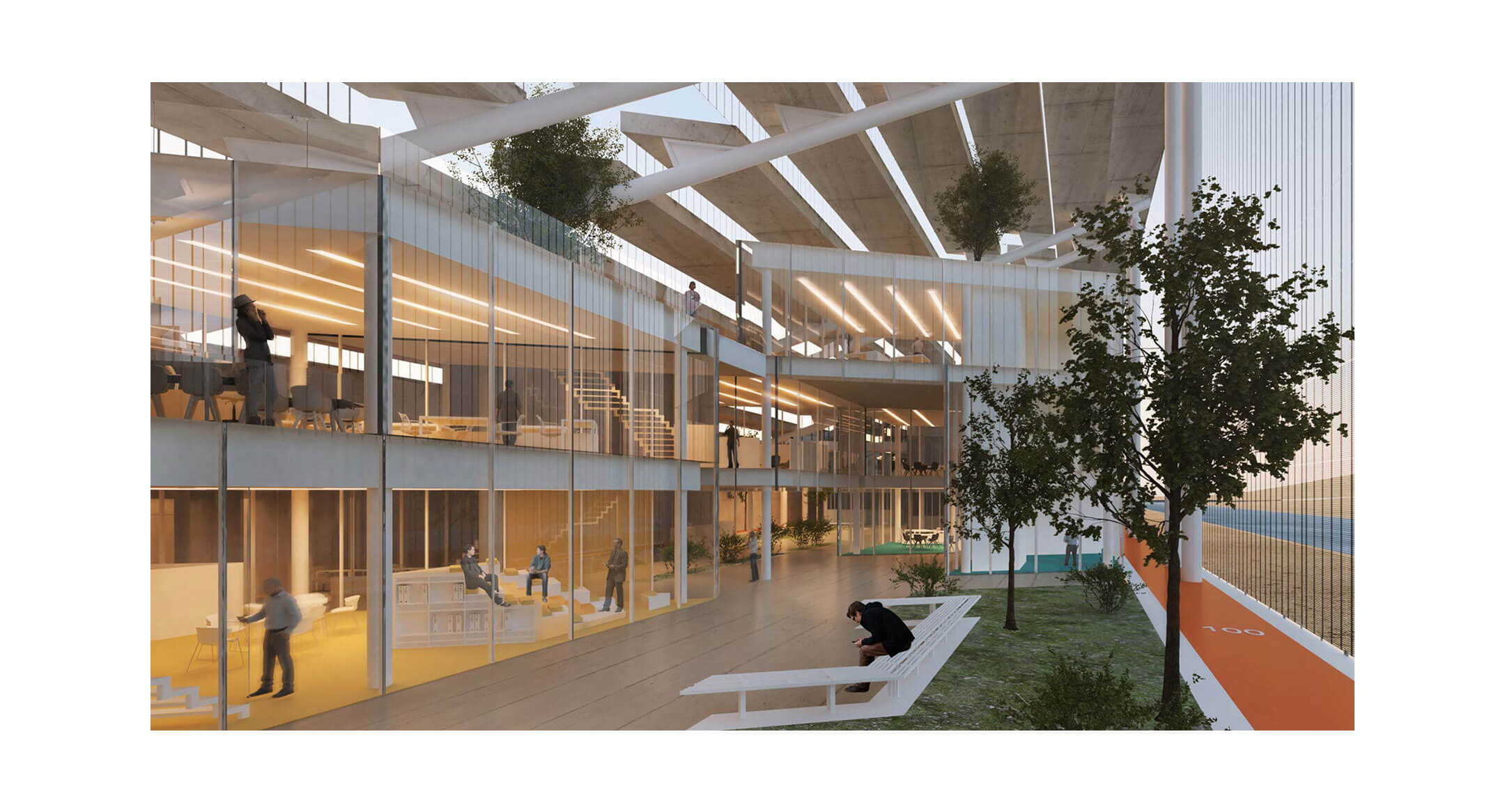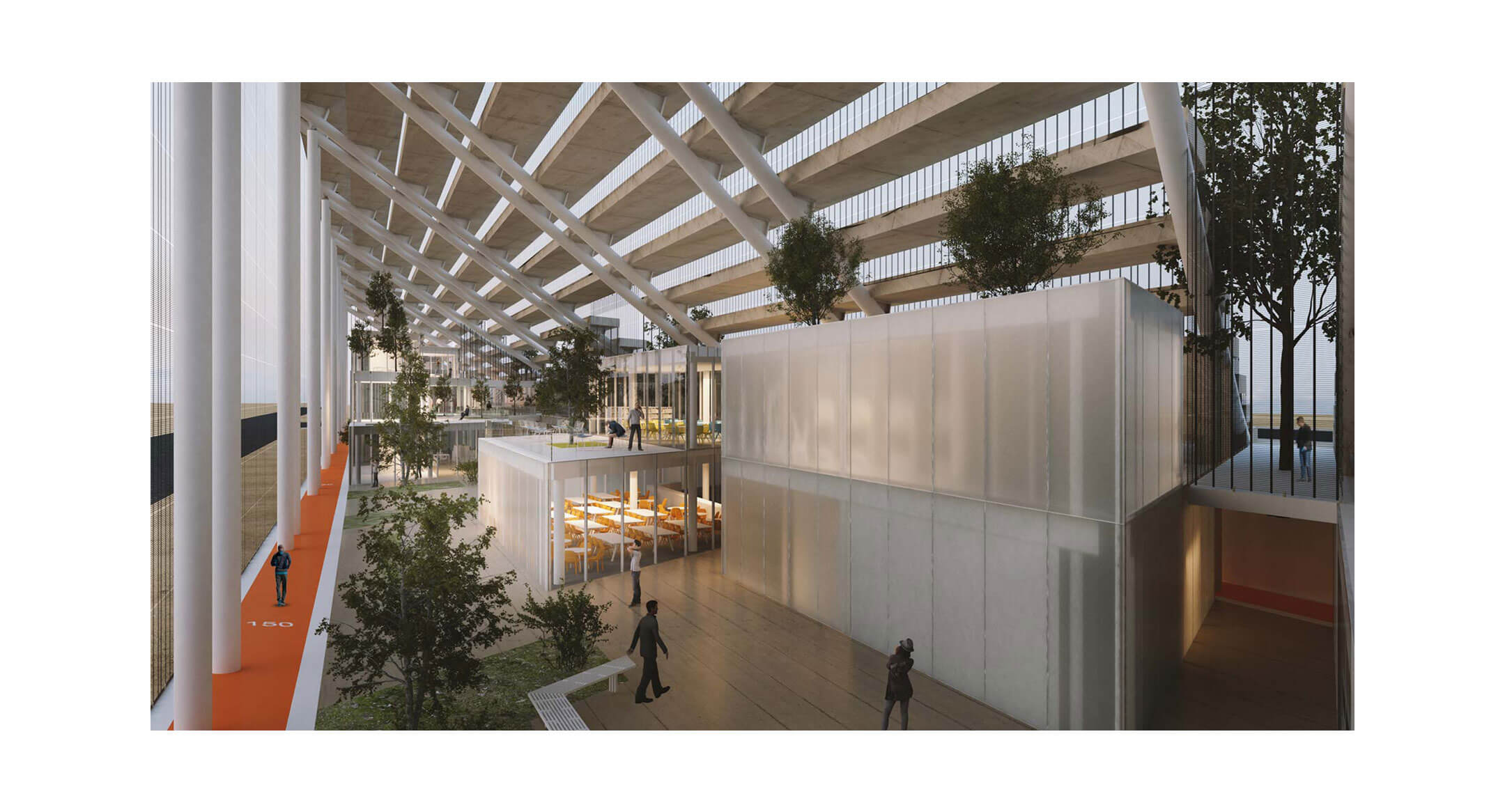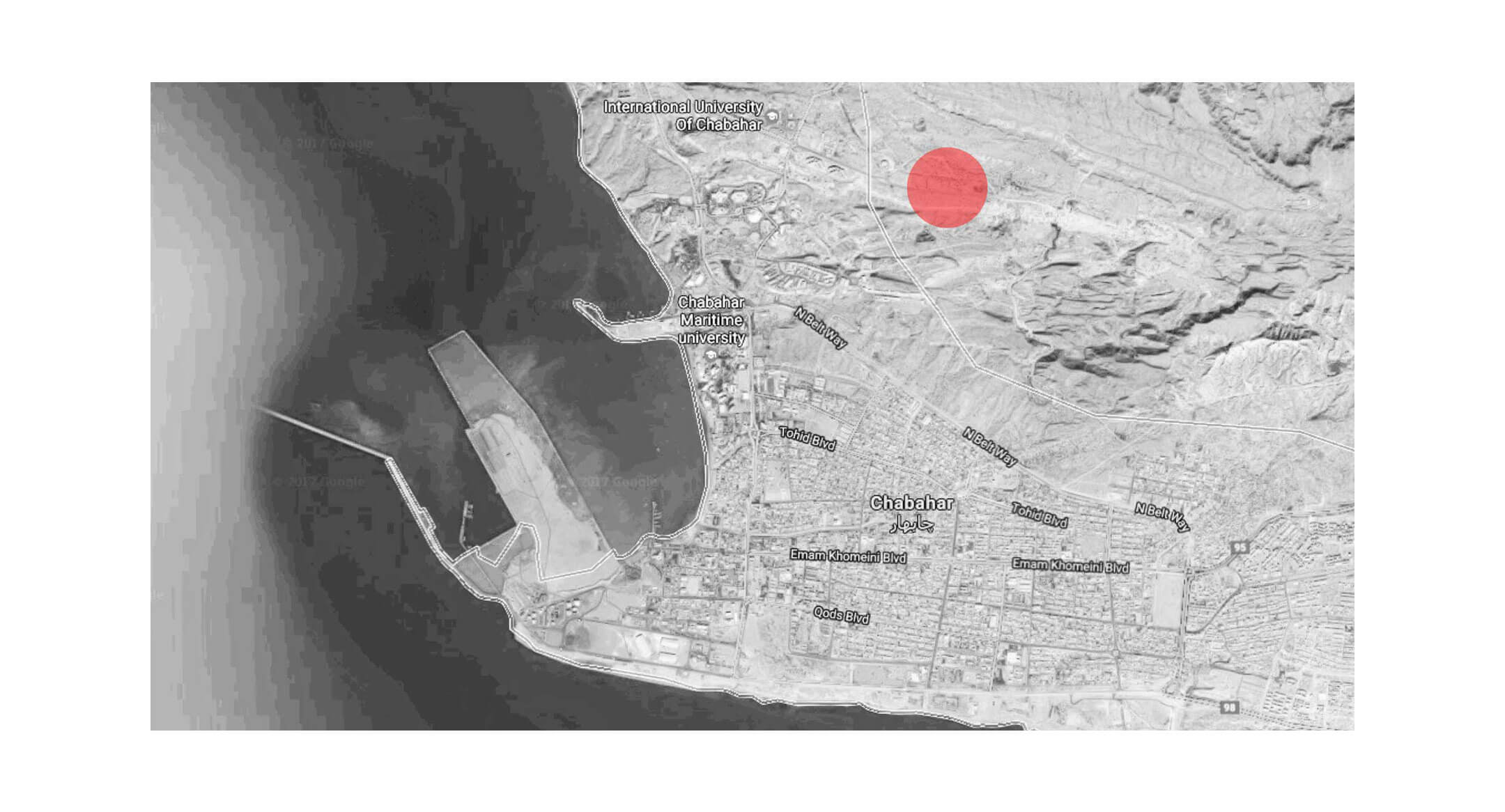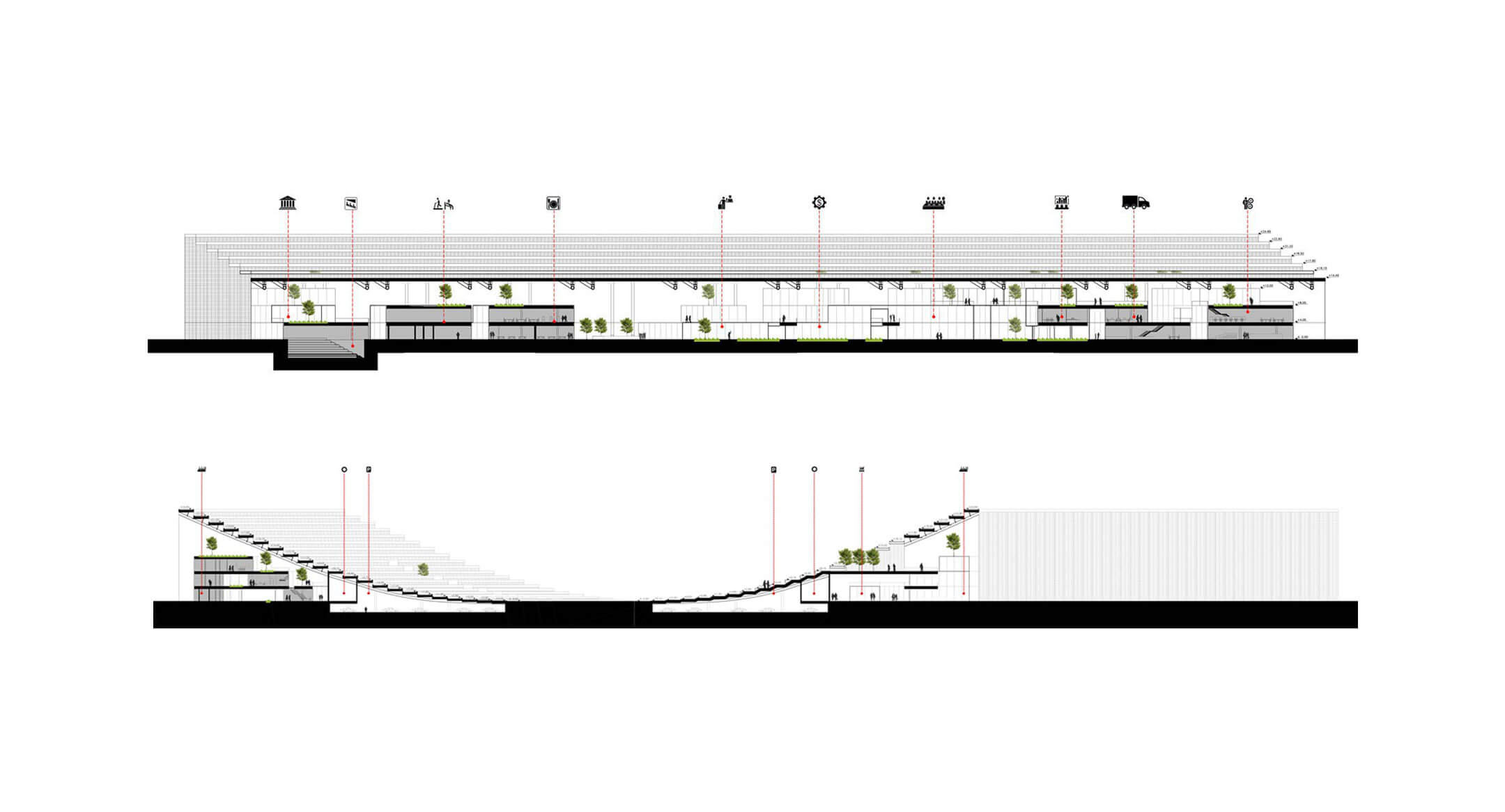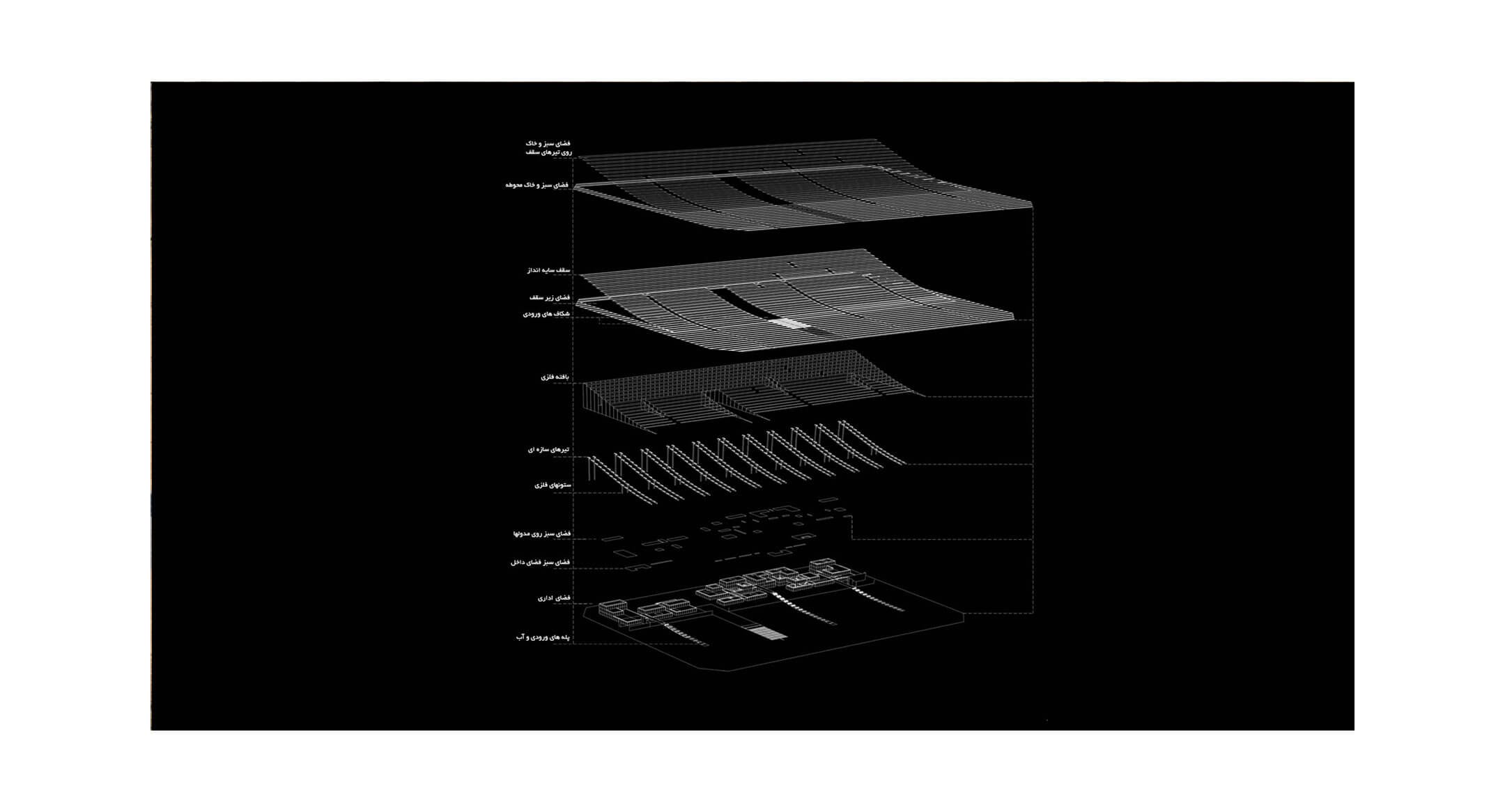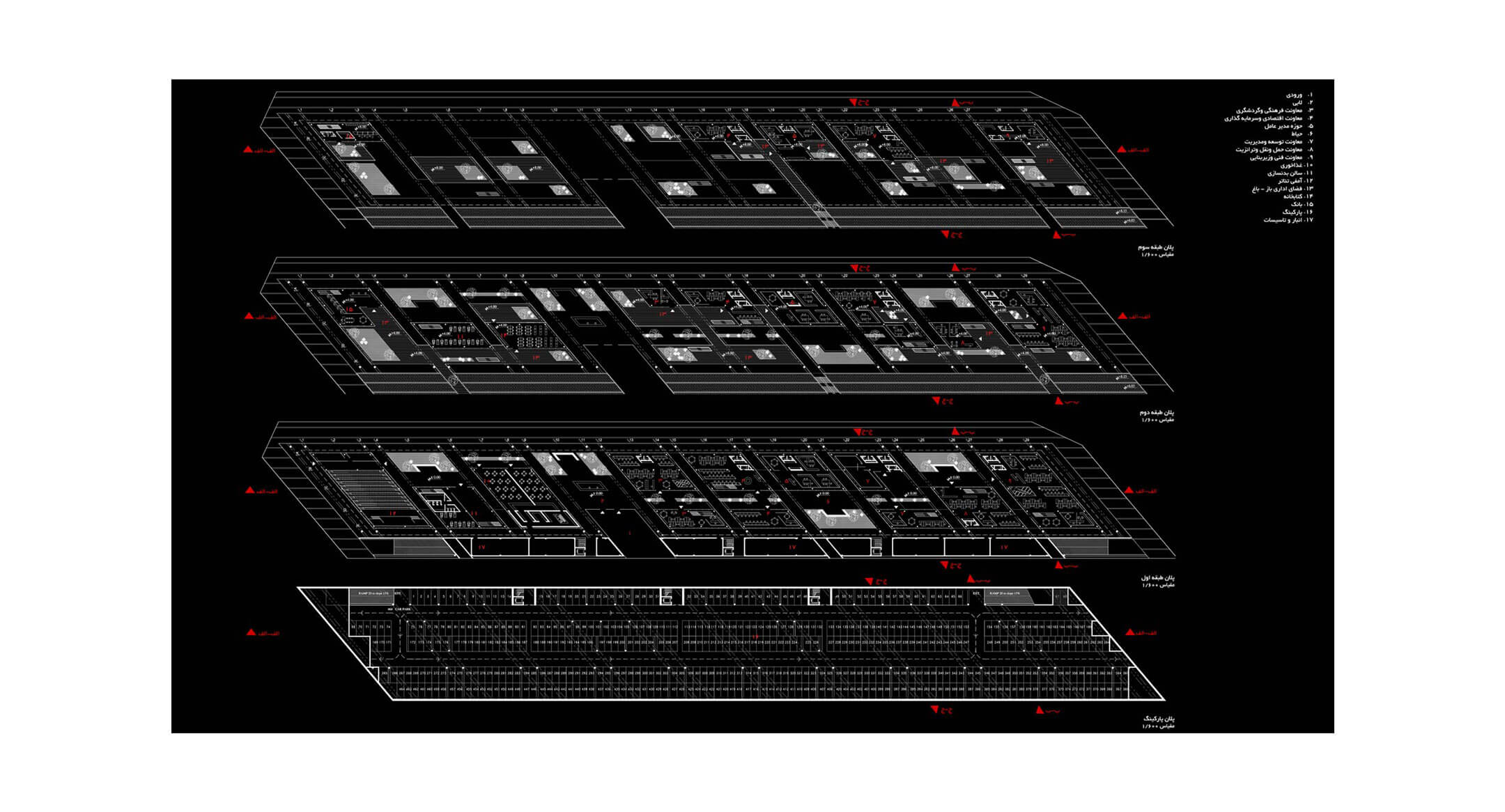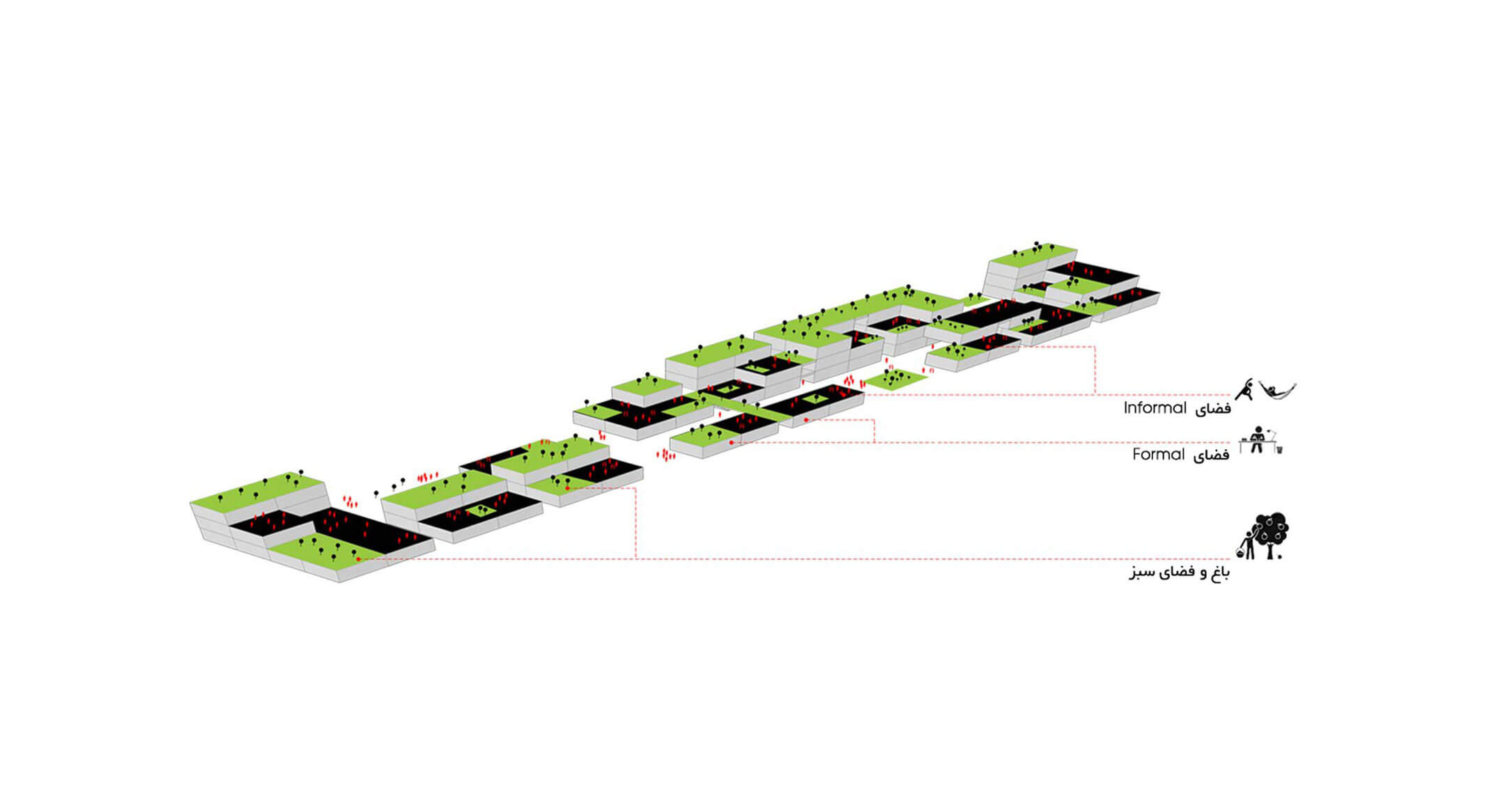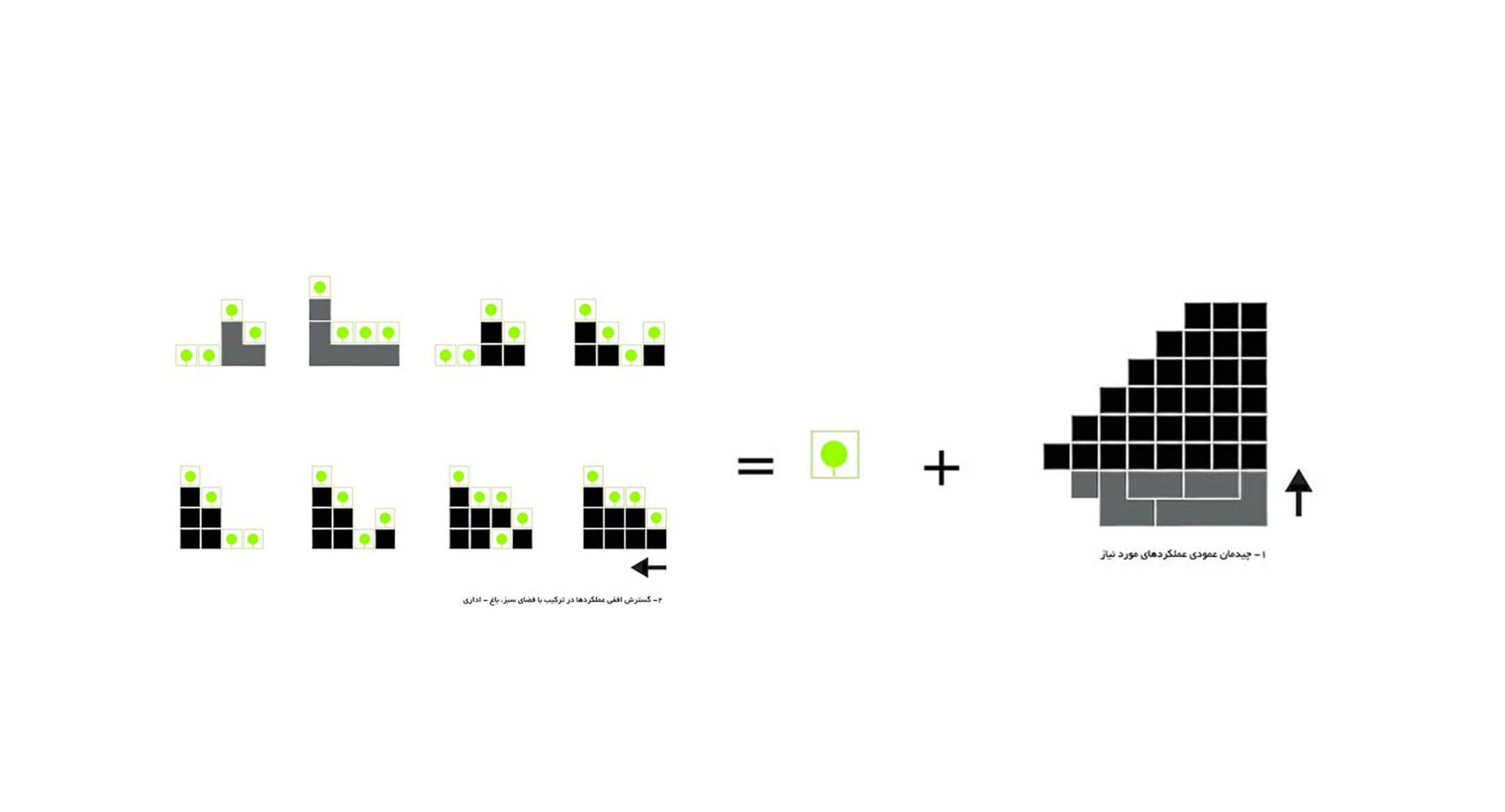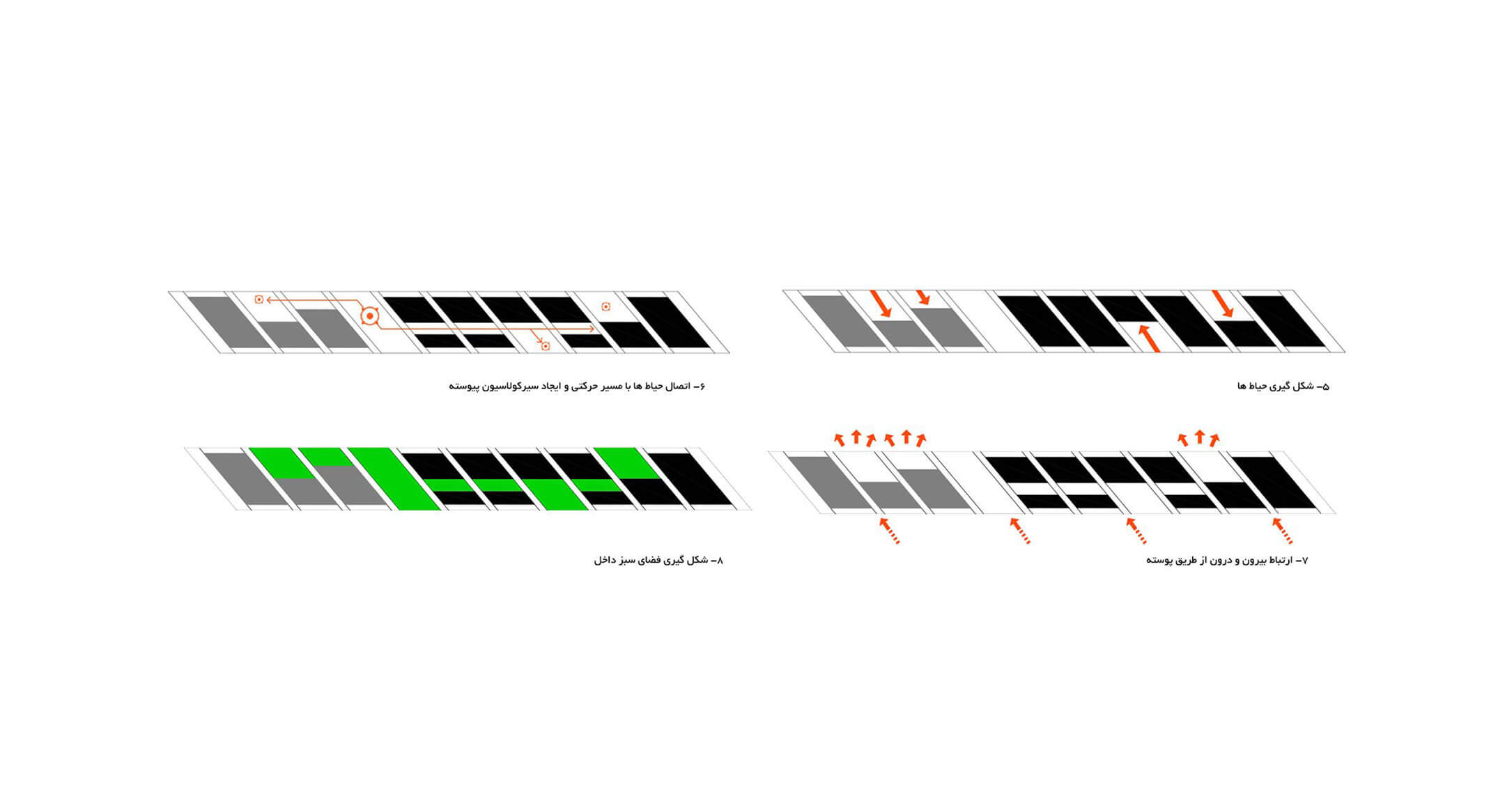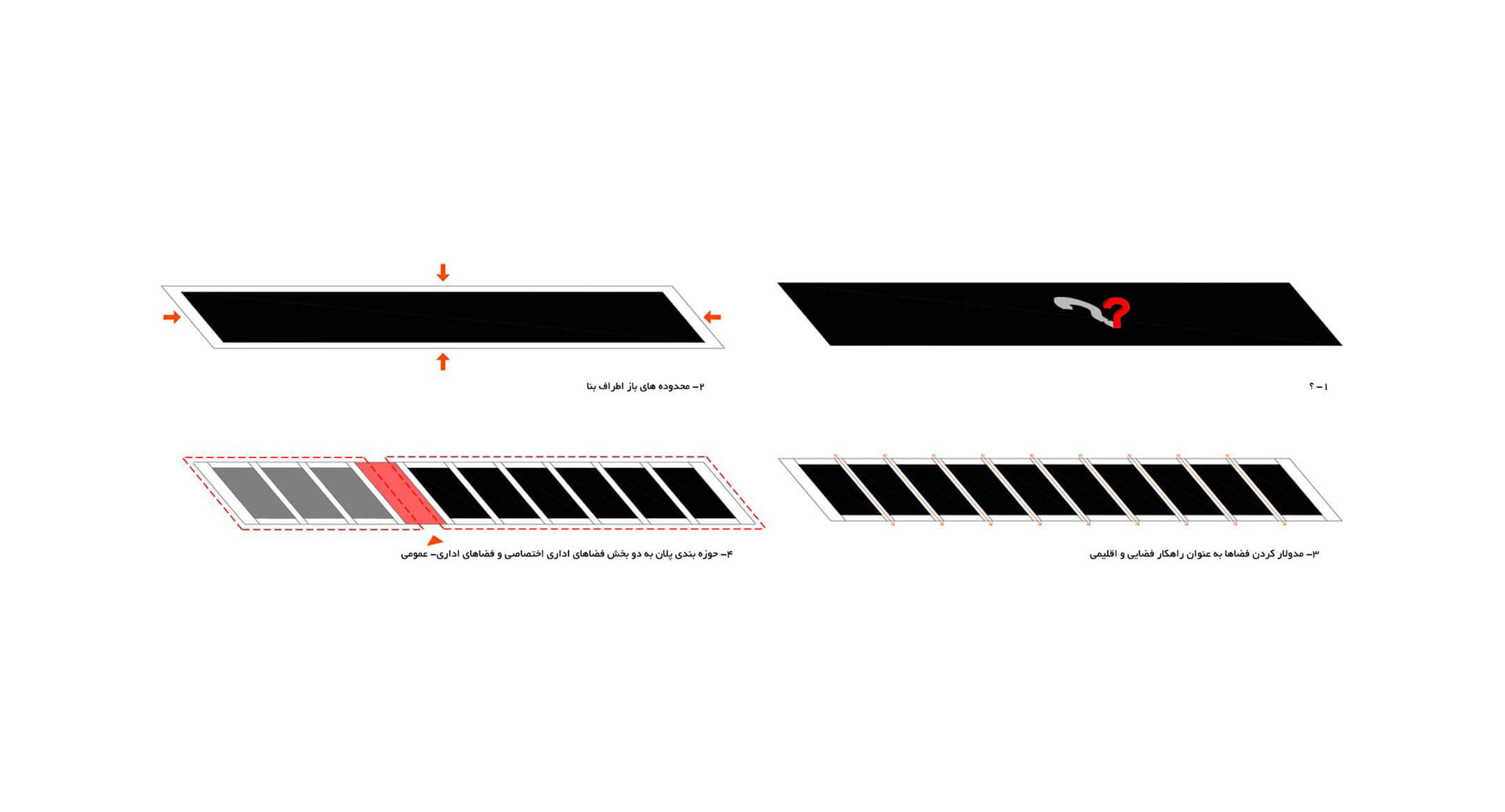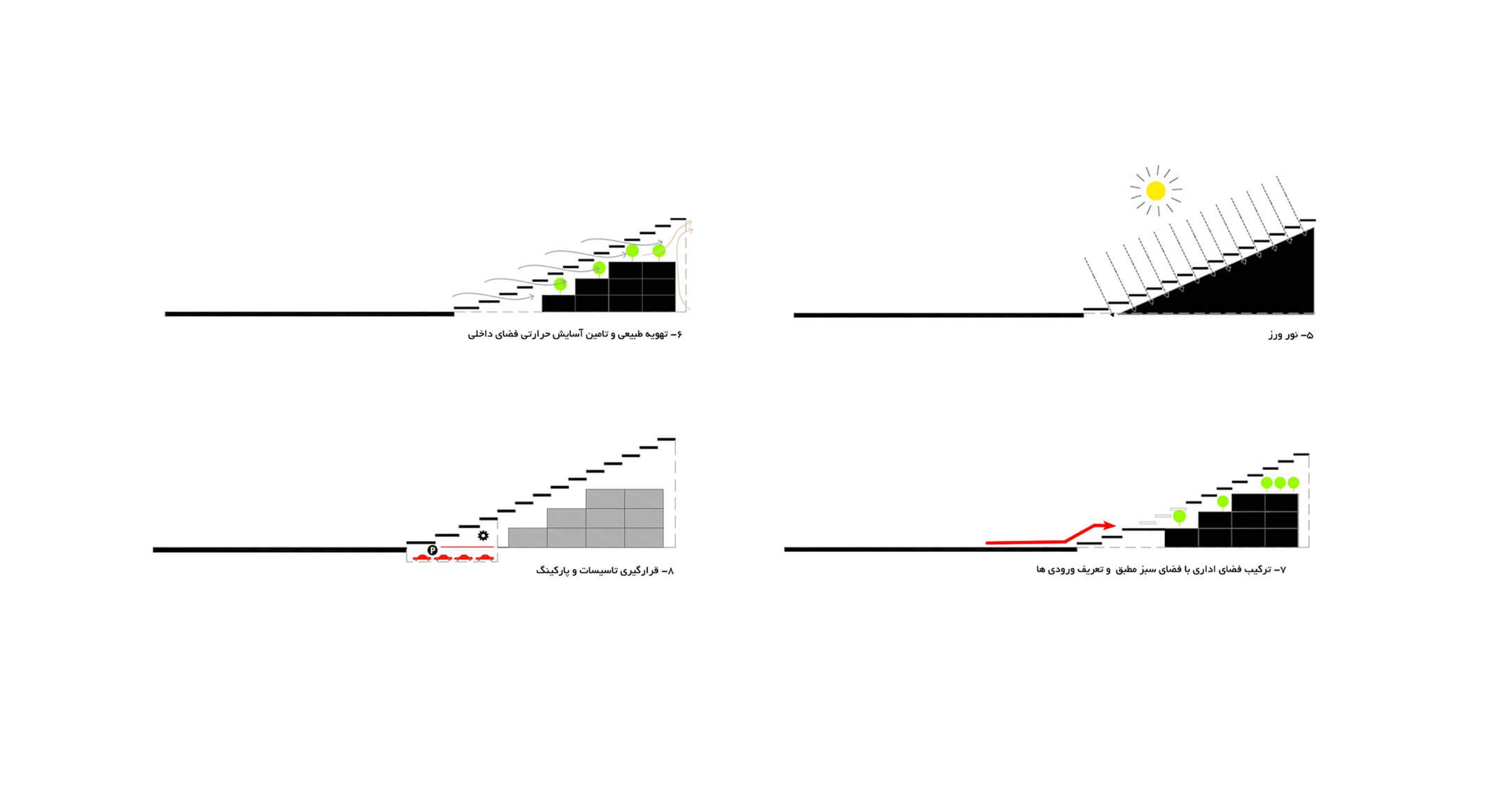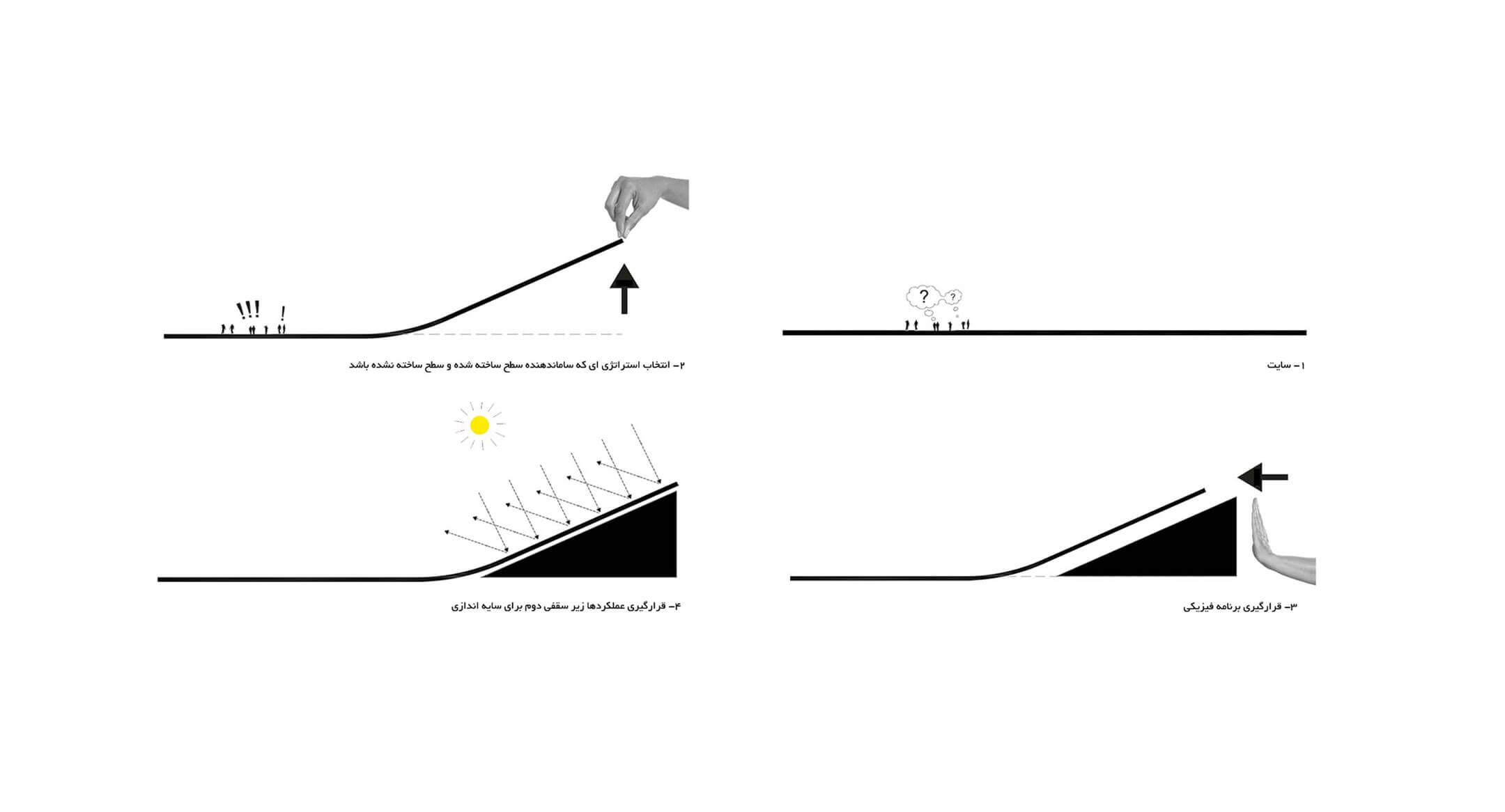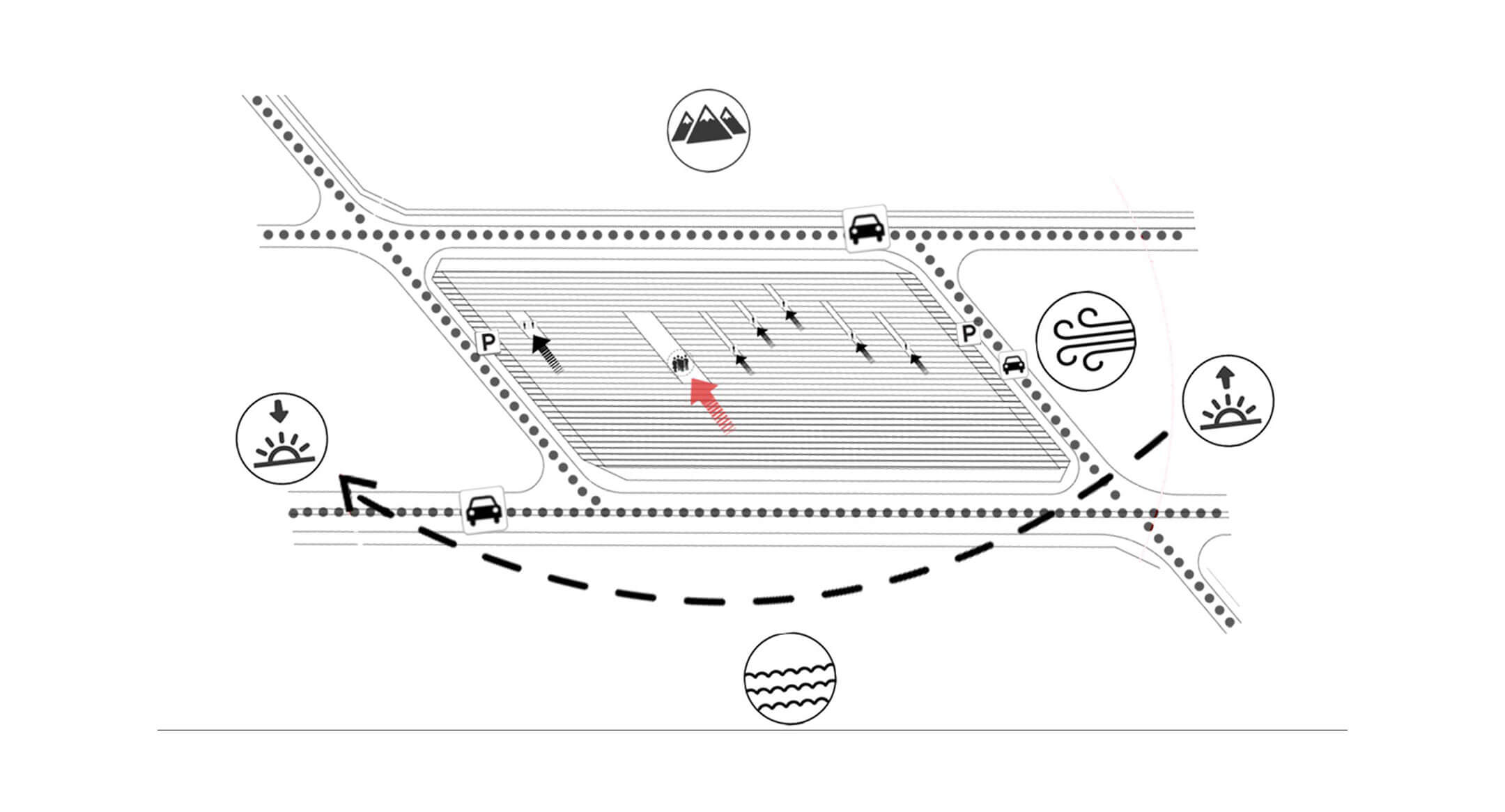CHABAHAR Freezone Organization Headquarters
Project Type: Office ; Design: Karand Architectural Group ; Client: Chabahar Freezone Organization
Located in an unbuilt development area near Chabahar, a free zone port city in the southeast of Iran on the shore of the Indian Ocean, the site has been chosen by the client, Chabahar Freezone organization, for the headquarter building. Considering the Chabahar climate- hot humid weather in the summer and warm weather in the winter- and its unique nature and vernacular architecture, we were aiming for a contextually appropriate and sustainable development model which could be used as an example for the city development.
As the most distinctive characteristic of Chabahar is its diverse character of the ground – in comparison to the plain sky, interacting with the context ground became our main design focus. The context in both meanings: objective and general.
Therefore, we propounded this key question:
How could considering the character of the ground define the architectural character and organize built and unbuilt zones?
Planning the project, we consider “ground as an important architecture element”. To provide thermal comfort (control direct exposure to sun and allow natural ventilation and daylight), the ground – a layer of concrete and soil- is lifted, extended, and perforated to form a shelter to allow the underlying offices. The rest facades remained open to allow natural ventilation. Surrounded by arid lands, headquarter building will stand out like an oasis.
Our proposal seeks to create two completely different experiences: the exterior is fully contextual and has emerged out of the local site conditions, reflecting the harsh nature. The interior, on the other hand, is so flexible and dynamic and includes diverse layouts of glass office boxes, following site shapes, with a green layer on the top. The closed boxes will be used as formal offices while the green space will be allocated to informal offices and circulation. Incorporating green space as a garden and working area, we were looking for an alternative to typically insular headquarters, making the office a place to communicate.
On the other hand, the chosen strategy led to a horizontal arrangement instead of a vertical one. In a site considerably bigger than the program (the site area: 35000 square meters, the program: 20000 square meters, the height rules: 3-8 levels, footprint: 2500-6500), arranging the program vertically would leave the major part of the site empty and undecided.
In horizontal order, it is possible to provide various entrances, so divided potentially public spaces – sports hall, amphitheater, library, and restaurant- can be used during non-official hours by the public. As the function of most adjacent lands will be hotels, the roof landscape could be used as a public space in the future, offering panoramic views of the ocean.
Project Information
Location
Chabahar
Date
2016
Size
30000 m2
Status
Competition
Prize
Chabahar Freezone Headquarters Competition,
1st Place
WAF, Office Future Category, Shortlisted, 2017
Client
Chabahar Freezone Organization


